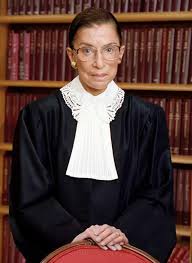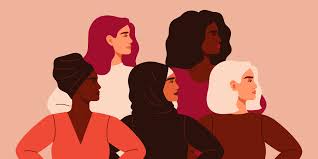
US celebrates 100th anniversary of women suffrage
September 7, 2020
Education Amidst the Pandemic: Fighting to Protect Students from COVID-19
September 27, 2020“My mother told me to be a lady. And for her, that meant be your own person, be independent.”
“When I’m sometimes asked ‘When will there be enough (women on the Supreme Court)?’ and my answer is: ‘When there are nine.’ People are shocked. But there’d been nine men, and nobody’s ever raised a question about that.”
These powerful lines were echoed across the world last week, on September 18, as the one who spoke it, Justice Ruth Bader Ginsburg, the American Jurist and feminist icon, passed away at the age of 83. The second woman to serve the Supreme Court, she fought hard and long to address gender equality issues and secured landmark judgments shaping the lives of women in the US throughout her career.
Born to a Jewish father and Polish immigrant mother on March 15, 1933, Joan Ruth Bader had to bear the loss of her elder sister and her mother at an early age. An active and excellent student from childhood, Bader graduated from Cornell University in Ithaca, New York, in Bachelors in arts degree in government. She also met her husband, Martin D. Ginsburg, in the same college. She attended Harvard Law School in the fall of 1956, where she was one of the only nine women in a class of 500 men, where she, including other eight girls, was reportedly asked by the dean of Harvard, ‘why are you at Harvard Law School, taking the place of a man?”
Instances and examples like these where her significant career steps were hindered because of gendered issues despite being fully qualified, she naturally developed the drive towards fighting for gender equality. However, precisely, her inspiration evolved during her time in Sweden, where she was conducting extensive research for her book at Lund University, where she observed that women made 20 to 25 percent of all law students, and one of the judges was working during eight months of pregnancy. Later, being one of the first few female professors of law, she also co-founded the Women’s Rights Law Reporter, the first law journal in the US focusing exclusively on women’s rights.
Her breakthrough career move was the six cases she fought related to gender discrimination before the Supreme Court between 1973 to 1976 where she won five of them. The noteworthy aspect of her argument that led her to victory was the strategic approach she had to apply during the argument. Rather than asking the court to end all gender discrimination at once, she aimed at discriminatory statues one at a time. Her approach also focused on explaining the court on how gender discrimination affects both men and women. She strategically chose her words, replacing the word ‘sex’ with ‘gender’ to avoid distraction to judges.
Her excellent oral advocacy led to the end of gender discrimination in various areas of law. Such as, Equal protection clause in the fourteenth amendment to women, which provides equal citizenship rights to all Americans in 1971, intermediate scrutiny on laws through gender lens for the first time in the US, setting equal drinking ages for men and women, equal legal measures for collecting social security benefits, the validity of women’s jury duty, and many more as such.
In 1993, President Bill Clinton nominated Ginsburg as an Associate Justice of the Supreme Court. Seen as a moderate and a consensus builder at that time, she was the second female and the first Jewish female justice of the Supreme Court. Her performance on the court is characterized as ‘cautious’ and ‘rational minimalist’ as she used the cautious approach to her arguments. When Justice Sandra Day O’ Connor retired in 2006, Ginsburg was the only woman in the court, when as per the New York Times, ‘she found her voice and used it’ referring to her 2006-2007 term.
One of her popular dissents to the Supreme Court was on the Ledbetter v. Goodyear case regarding pay discrimination based on gender. She raised her argument on the facts that most of the time, women do not know they are being paid less, so they cannot act at the time of paycheck, and how women face reluctance in male-dominated fields to file the lawsuits for a small amount, so they wait till the disparity accumulates. Her dissent later resulted in making the Lilly Ledbetter fair pay act, which made it employees to win pay discrimination claims, the law.
Ginsburg also actively advocated the use of foreign law and norms to shape US law. She also supported many tribal and native laws in the US. Her opinion also led the court to rule that mental illness is a form of disability covered under the Americans with Disabilities Act of 1990. She also showed her support to the #Metoo movement by sharing her personal experiences.
Ginsburg, a grandmother of four, lost her husband to testicular cancer in 2010. In her lifetime, she fought with five bouts of cancer, first diagnosed in 1999 with colon cancer. Later in 2009, she underwent treatment for pancreatic cancer, and in 2019 she was yet again diagnosed with lung cancer. In January 2020, she was cancer-free, but by the end of May 2020, she was again dealing with pancreatic cancer. She passed away from the same complications at the age of 87, at her home.
Even after death, Judge RBG is creating a history for women being the first women to lie in the state in the US Capitol. Thirty-four men have been honored so far since 1852. The honor comes after Ginsburg lay in repose at the US Supreme court, where she served for 27 years. Even after her death, her legacy remains.




